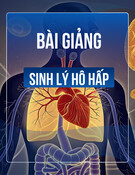
TNU Journal of Science and Technology
230(01): 412 - 422
http://jst.tnu.edu.vn 412 Email: jst@tnu.edu.vn
RECENT ADVANCES IN VIRULENCE FACTORS OF
EMERGING ENTEROPATHOGEN Escherichia alberii: A REVIEW
Nguyen Thi Thu Huong*, Do Tuan Tung, Pham Thi Thanh Van
TNU - University of Agriculture and Forestry
ARTICLE INFO
ABSTRACT
Received:
19/5/2024
Diarrhea is the leading cause of infant mortality worldwide, especially
in the developing world. Among various etiologic agents within the
Escherichia genus, Escherichia albertii is becoming recognized as a
significant human enteropathogen. There has been little knowledge
about the colonization and infection of E. albertii in comparison to its
close relatives, E. coli. This bacteria is considered food- and water-
borne by birds and is a natural reservoir. Attaching and effacing
lesions, which are encoded by a type III secretion system (T3SS) on
the locus of enterocyte effacement (LEE), are the primary cause of E.
albertii's pathogenicity. Although E. albertii contains the gene for
Shiga toxin type ecoded by subtype stx2f and cytolethal distening
toxin (cdt), the molecular mechanism of toxin production during
infection is still unclear. The hierarchy and the relationship of
adhesion and effectors during the invasion of intestinal epithelial cells
share similar characteristics to those of gastrointestinal pathogenic E.
coli bacteria. The review information is essential heplful for
investigation to develop effective prevention and treatment for this
diarrheal pathogen.
Revised:
17/12/2024
Published:
18/12/2024
KEYWORDS
Escherichia albertii
Type III secretion system
Shiga toxin
Intestinal infection
Food and water borne pathogen
TỔNG QUAN CẬP NHẬT CÁC YẾU TỐ ĐỘC LỰC CỦA VI KHUẨN
GÂY BỆNH ĐƯỜNG RUỘT MỚI NỔI Escherichia alberii
Nguyễn Thị Thu Hương, Đỗ Tuấn Tùng, Phạm Thị Thanh Vân
Trường Đại học Nông Lâm - ĐH Thái Nguyên
THÔNG TIN BÀI BÁO
TÓM TẮT
Ngày nhận bài:
19/5/2024
Tiêu chảy là nguyên nhân hàng đầu gây tử vong ở trẻ em, đặc biệt là
ở các nước đang phát triển. Trong số rất nhiều các tác nhân gây bệnh,
Escherichia albertii là vi khuẩn mới được nhận biết gần đây trong chi
Escherichia gây bệnh tiêu chảy ở người. So với vi khuẩn E. coli,
những nghiên cứu và hiểu biết về quá trình xâm nhiễm và gây bệnh
của E. albertii còn rất hạn chế. Vi khuẩn này được cho là lây nhiễm
theo thức ăn và nước uống nhiễm khuẩn và trong tự nhiên thường
được phân lập từ gia cầm và chim hoang dã. Nhân tố độc lực chính
của E. albertii là khả năng tạo tổn thương bám dính AE được quy
định bởi hệ thống tiết tuýp III. Mặc dù E. albertii có chứa gene quy
định độc tố Shiga do gene stx2f quy định nhưng cơ chế phân tử của
quá trình sản sinh độc tố trong lây nhiễm còn chưa rõ ràng. Thứ tự
hoạt động cũng như mối liên quan của các yếu tố bám dính và xâm
nhiễm trong quá trình nhân lên ở tế bào biểu mô ruột có nhiều đặc
điểm giống với vi khuẩn E. coli gây tiêu chảy. Những nội dung cập
nhật trong bài viết này là cơ sở hữu ích cho các nghiên cứu tiếp theo
nhằm tìm ra giải pháp ngăn ngừa và điều trị hiệu quả mầm bệnh này.
Ngày hoàn thiện:
17/12/2024
Ngày đăng:
18/12/2024
TỪ KHÓA
Escherichia albertii
Hệ thống tiết tuýp III
Độc tố Shiga
Nhiễm trùng ruột
Mầm bệnh từ thực phẩm
DOI: https://doi.org/10.34238/tnu-jst.10416
* Corresponding author. Email: nguyenthithuhuongcb@tuaf.edu.vn

TNU Journal of Science and Technology
230(01): 412 - 422
http://jst.tnu.edu.vn 413 Email: jst@tnu.edu.vn
1. Introduction
Escherichia albertii was first isolated from a 9-month-old Bangladeshi pediatric patient.
However, the strain was misclassified as Hafnia alvei [1], [2]. Some A. alvei strains subsequently
isolated from children with diarrhea in Bangladesh shared similar characteristics to pathogenic E.
coli due to the capability to induce attaching and effacing lesions on rabbit epithelial cells and
carry the eae gene encoding the intimin protein responsible for this attachment of bacteria [2].
The intimin-positive (eae+) H. alvei strains were reclassified as new species within the
genus Escherichia based on biochemical and genetic characteristics [3], [4] and named E.
albertii for recognition acknowledged by M. John Albert, who described and isolated the first
strain of the species [5].
The clinical importance of E. albertii as an emerging agent of diarrhea has been
underappreciated due to the difficulty of distinguishing it from other Enterobacteriaceae species.
Closely related genetic and biochemical characteristics between E. albertii and E. coli hampered
the differentiation [6]–[10]. In some outbreaks, E. albertii was initially identified as
enteropathogenic E. coli (EPEC) or enterohemorrhagic E. coli (EHEC) [11]–[13]. Thus far, E.
albertii has been identified in both sporadic infections and outbreaks [12], [14]–[16], and the
common clinical symptom is watery diarrhea [1], [16]–[18]. It is assumed that the E.
albertii infection is associated with food and water contamination [19]. Though the bacteria have
been isolated from numerous animal sources [20]–[22], the main natural reservoir is still unclear.
The ability to be an enteropathogen requires the use of adhesin proteins that bring bacteria
closer to the epithelia and allow them to colonize the gastrointestine. The hallmark of E.
albertii infection is the formation of an attaching and effacing (A/E) lesion in the human
intestinal mucosa that is similar to other A/E lesion-producing E. coli and murine intestinal
pathogens (Citrobacter rodentium). After that, the toxins and/or effectors are secreted into the
host cell through the secretory systems, disrupting bio-physiological processes in the cell and
ultimately causing clinical symptoms [23]. The main virulence arsenal of E. albertii includes the
type three secretion system (T3SS), porcine attaching and effacing lesion (Paa), Shiga toxin
(Stx), and cytolethal distending (CDT) [24]. Clarity of the mechanism of how adhesins and toxins
work is critical to understanding the pathogenicity of the bacteria as well as solutions for
therapeutic intervention.
2. Clinical significance and epidemiology
E. albertii was considered a potentially food- and water-borne pathogen [18]. This species has
been found in many types of raw food, such as pork and mutton meat [25], oysters [26], poultry
meat [27], milk and cheese [28], and lettuce [29]. In most sporadic cases of infection, the
transmission vehicle is commonly not identified. However, there are some outbreaks with
confirmed sources of contamination such as salad, water, restaurant food, and lunch boxes [12,
16, 18, 30]. E. albertii strains were also isolated from diverse water bodies worldwide, including
the water distribution systems [10], [13]. This led to concern about the contamination of seafood
and the irrigation system for fresh produce. Despite a strong correlation between E. albertii and
disease outbreaks in humans, the clinical relevance and transmission cycle remain unexplored.
E. alberti has been isolated from various sources of domestic and wild animals. A high
frequency of E. albertii originated from birds and poultry, suggesting a risk for bacterial
exposure. E. albertii was found in clinically healthy wild birds in Australia [31], Korea [32], and
Antarctica [22], dead birds in Scotland [33], Alaska [9], and wild and poultry flocks in Switzerland
[34]. Poultry meat might be an important infection vehicle since E. albertii was recovered from raw
chicken in the USA, Japan, and China [25], [35], [36]. Beside birds, E. albertii was also isolated
from cattle, pigs, dogs, cats, martens, rabbits, and bats [21], [37], [38]. The occurrence of E.
albertii in farm and companion animals poses a significant threat for people in close contact since
animal- and human-E. albertii isolates sometimes are not host-specific [39].

TNU Journal of Science and Technology
230(01): 412 - 422
http://jst.tnu.edu.vn 414 Email: jst@tnu.edu.vn
Though the clinical significance of E. albertii has not been clearly understood, this bacteria
has caused sporadic cases and outbreaks worldwide [15], [39]–[42]. Clinical symptoms caused
by E. albertii are similar to typical bacterial enteric infections with watery diarrhea, vomiting,
fever, abdominal distension, and dehydration [1], [43]. Some strains can produce Shigatoxin,
which induces bowel diarrhea [44]. This bacteria was isolated from the blood of a patient with
bacteremia [45], [46] and suggested a capability to be a very serious etiologent. E. albertii has
been first isolated from pediatric patients; the E. albertii infection has also been reported in adults
of middle and elderly ages [15], [45]. The average incubation period for the E. albertii infection
was about 12–24 hours [18].
3. Virulence factors
3.1. Type III Secretion System
In the Escherichia genus, enterohemorrhagic E. coli (EHEC) and enteropathogenic E. coli
(EPEC) typically employ attaching and effacing (A/E) lesions in intestinal colonization [23]. The
(A/E) lesions are characterized by the intimate attachment of bacteria to the epithelial microvilli
and form an actin-rich pedestal right beneath the adherence and efface of the brush border
microvilli [47]. Similar to E. coli, E. albertii has a 35–37 kb pathogenicity island (PAI) that is
called the locus of enterocyte effacement (LEE) [24], [48]. LEE in E. albertii is highly conserved
and null in a few strains [14], [48]. Thus far, PheU tRNA was the only insertion site of LEE in E.
albertii, whereas LEE in EHEC and EPEC was present either in PheU tRNA, PheV tRNA,
or SelC tRNA. Since LEE is a horizontally acquired pathogenicity island, a single insertion site
of LEE in E. albertii suggests a single acquisition in evolutionary history. The typical structure of
LEE contains forty-one genes distributed in five polycistronic operons (LEE1–LEE5), a
bicistronic operon (grlAB), and single gene units [47], [49]. The genomic analysis revealed that
the gene composition of LEE in E. albertii was highly conserved, with a range of 91–100%
prevalence for each gene [48].
The eae gene-encoded intimin protein is used as a genetic marker for LEE. Intimin is an outer
membrane protein that attaches to the host cell through its translocator, the Tir protein. In EHEC
and EPEC, eae showed a highly variable sequence in the C-terminal, where the cellular binding
site is, and were classified into more than 30 subtypes [50], [51]. There is a prevalent association
between eae-subtypes, serotypes, and hosts in E. coli [50], [52], [53]. In E. albertii, many
subtypes of eae have been recognized, including α8, β3, ε1, ε3, ε4, ξ, z3, τ, ι2, ν, υ, ρ, ρ2, and the
novel ones were N1.2, N1.3, N2, N3, N4, N5, α9, α10, β4, γ3, ς3, λ2, ο1 [11], [48]. Though some
eae-subtypes in E. albertii were rare in EPEC and EHEC and even novel subtypes, a limited
number of E. albertii strains have been isolated and investigated compared to E. coli, so the
diversity of intimin in E. albertii requires more systematic analysis.
LEE encodes for the type three secretion systems that function as molecular machinery to
secrete the effector proteins (both LEE-encoded and non-LEE-encoded proteins) into the
cytoplasm of the host cells [47]. LEE-encoded translocators (EspA, EspB, and EspD) and
effectors (Tir, Map, EspF, EspG, EspH, and EspZ) were also present in 100% of E.
albertiigenomes thus far [14], [47], [48]. However, they exhibit a diverse sequence from EPEC to
EHEC. In contrast to LEE-encoded effectors, non-LEE-encoded effectors were found in varying
distributions in E. albertii genomes [48], [54]. In addition, most non-LEE-effectors were encoded
on prophages (PP) and integrative elements (IE) in EHEC [55], whereas E. albertii carried fewer
PPs and IEs, and some non-LEE-effectors were encoded on chromosomal loci [14]. The non-
LEE-enoded effectors had essential functions in forming A/E lesions in EPEC [56]. From these
observations, investigation into the regulation and structure-function of genes in LEE in E.
albertii is essential to understanding the mechanism of initial attachment to intestinal microvilli.
Besides eae, LEE5 contains tir, which encodes for the intimin translocated receptor Tir protein
[47]. Intimin-Tir binding induces the reorganization of the host cell skeleton with F-actin

TNU Journal of Science and Technology
230(01): 412 - 422
http://jst.tnu.edu.vn 415 Email: jst@tnu.edu.vn
accumulation underneath the adhering bacteria, resulting in the formation of pedestal-like
structures. The in vivo investigations confirmed the A/E lesion process in E. alberiidepended on
intimin and its translocator, Tir [57], [58]. The deletion of eae and tir caused a significant decrease
in the invasion index in Caco-2 cells compared to the wild-type E. albertii strain 1551-2 [57].
Inducement of F-actin for pedestal formation used two distinct parthways: Tir-Nck dependent
and/or Tir-Nck independent [59]–[61]. The F-actin accumulation was observed through the
fluorescence-actin staining (FAS) test for Bangladeshi E. albertii strains by using the rabbit ileal
loop model [2]. The other six Brazilian E. albertii strains were also FAS-positive in infected
HeLa cells [40]. The A/E lession with pedestal structure caused by E. albertii strain 1551-2 on rat
intestinal mucosa was observed under scanning electron microscopy [57]. The strain was also
able to cross the intestine to reach the liver in vivo [57]. A recent study on E. albertii strain 1552-
1 demonstrated that F-actin polymerization was triggered through a Nck-independent pathway
[62]. A new protein, TccP3, colocalized with Tir during the polymerization of F-actin, though it
was not found in the Nck-independent pathway previously [62]. The tccP2 gene is presented in
161 out of 482 E. albertii genomes. It would be worth clarifying the function of TccP2 in A/E
lesion formation.
3.2. Shiga toxin
Shiga toxin (Stx) was first identified in Shigella dysenteriae and is present in a subset of
EHEC and STEC that is able to produce the toxin. Stxs belong to the group of AB5 enterotoxins
that consists of a single enzymatic A subunit (N-glycosidase activity) and five structural B
subunits [63]. Shiga toxin inhibits protein synthesis in eukaryotic cells by removing an adenine
residue from the 28S rRNA of the 60S ribosome [63]. The five identical B subunits mediate toxin
binding to the Gb3 (globotriaosylceramide) receptor of host cells [63]. There are two subtypes of
Stxs, including Stx1 and Stx2, that are similar in mechanism but antigenically distinct [64]. The
Stx encoding genes are also classified into two types with several subtypes: stx1 (stx1a, stx1c, stx1d,
and stx1e) and fifteen stx2 subtypes (from stx2a to stx2o) [65].
The stx2f variant was first detected in E. coli isolated from pigeons, and that study identified
12.5% of pigeon fecal drops as stx2f positive [66]. Other studies confirmed such a high
prevalence of STEC in pigeon-carried stx2f [67]–[69]. Thus far, all stx-positive E. albertii
have carried stx2f [11], [24], [48], [70]–[73]. Most of the genomic analysis showed stx2f-
positive E. albertii originated from birds and poultry, suggesting a host-specific pattern. In a
genomic analysis of 482 E. albertiigenomes, a sporadic distribution of stx2f across phylogenetic
tree linages suggested a horizontal transfer of phage-carrying stx2f. There is only one
strain stx2a positive [74]. Genomic location, structure, and regulatory controls of phage-
carrying stx2f in E. albertii have not been investigated.
In E. coli, the STEC carrying T3SS and stx2a was considered highly virulence-causing
hemorrhagic colitis and hemolytic uremic syndrom (HUS) [75]. The only reported stx2a- and eae-
positive E. albertii strain could cause bloody diarrhea, whereas most of the other eae-positive E.
albertii strains caused diarrhea [44]. In STEC with stx2f-induced milder symptoms, no outbreaks
have been reported, and only one HUS patient has been reported [76], [77]. That might be
associated with weaker binding to Gb3-lipopolysaccharide and less toxicity to vero cells than
Stx2a [78]. Few stx2f-E. albertii strains were isolated from patients, and the identified symptoms
included non-bloody diarrhea [11]. However, Stx2f itself was more stable at low pH and high
temperatures than Stx2a [78], suggesting that many other factors might contribute to the
differences in toxicity and pathology.
Several E. albertii strains carrying stx2f show biological activities of Stx2f in cytotoxicity
assays using vero cells [70], [72], [79]. However, it was unclear about the level of Stx2f
expression, and the lethal effect was complicated by the presence of CDT [70].
3.3. Cytolethal distening toxin (CDT)

TNU Journal of Science and Technology
230(01): 412 - 422
http://jst.tnu.edu.vn 416 Email: jst@tnu.edu.vn
Cytolethal distening toxin (CDT) is synthesized by more than thirty Gram-negative bacteria,
including common gastrointestinal pathogens such as E.
coli, Shigella, Campylobacter, Samonella, Helicobacter, and E. albertii [80–85].
CDT intoxication is defined by the nuclear and cytoplasmic expansion of mammalian cells,
which causes distention and ultimately results in death. An apoptotic response in fibroblast,
epithelial, or lymphoblastoid mammalian cells causes CDT-dependent cell death. The AB2-type
genotoxin CDT is a heterotrimeric complex made up of CdtA, CdtB, and CdtC subunits that are
encoded by the eponym genes [86], [87]. The catalytic component CdtB exhibits phosphatase and
damages host cell DNA through DNase-like activity in vitro [86], [88]. Subunits CdtA and CdtC
are responsible for binding to the receptor on susceptible cells and transporting the active
subunit into the cytoplasm (CdtB) [89]. CdtB introduces double-stranded breaks that lead to
DNA fragments [90].
The toxin is encoded by the cdtABC operon that was initially identified in E. coli and
classified into five subtypes based on the variation of the cdtB gene (I to V) [91]. Such a high
frequency of E. albertii isolate genomes carry the cdtABC locus, mostly belonging to the
subgroups cdtB-II, III, and V, whereas subgroup cdtB-I was less frequent [92]. A new
subtype, cdtB-VI, has been newly proposed in E. albertii [48]. An observed CdtB-II was the
dominant type in E. albertii at 68% [48], and a reidentification of 20 cdt-II gene-positive E.
coli as E. alberti suggests that CdtB-II might be a reliable genetic marker.
There is a limitation to in vivo investigation of CDT cytotoxicity in E. albertii infection. The
Hela cells that were exposed to the protein extracted from E. albertii cell lysates exhibited the
cytoplasmic distension and nuclear fragmentation that are typical of CDT [8]. However, the
expression of cdtB needed to be confirmed to exclude the contribution of other factors. The
biological activity of CDT-I and CDT-II was detected in the distension of vero cells that had been
infected by E. albertii strain P2660 [70] by specific antibody reactions.
3.4. Other adhesins and effectors
The paa gene that is associated with porcine attaching and effacing lesions was presented in a
subset of EPEC and enterotoxigenic E. coli (ETEC) [93], [94], but was highly prevalent in E.
albertii [17], [48], [71]. In ETEC, paalocated plasmids suggested this virulent gene is a mobile
genetic element. The paa-negative but eae-positive porcire EPEC O45 showed a positive A/E
lesion, suggesting that Paa contributed to the early stage of adherence in the A/E lesion [95]. The
functional characteristics of this putative colonization factor in E. albertii have not been
investigated.
The bundle-forming pilus (BFP) is a large rope-like structure and an important adherence
factor of EPEC and is encoded on the AEF plasmid [96]. A subset of 18 E. albertii strains
carried bfpA [48]. In a single E. albertii strain, 1552-1 exhibits localized adherence in HeLa/Hep-
2 cells by BFP and forms compact microcolonies [58].
In EPEC, a large protein (366 kDa) called LifA is able to inhibit lymphocyte activation [97].
This protein in EHEC, called Efa1, encoded by efa1, is required for adhesive properties in vitro
[98]. The screening of efa1 shows the gene is variably present in E. albertii genomes [48].
In addition to T3SS, E. coli type III secretion system 2 was found to be a highly conserved
virulence factor of E. albertii[92]. Using the eivG gene as a marker, Ooka et al. (2005) found that
ETT2 was commonly distributed in E. albertii. This locus in E. albertii was apparently intact
[14], [48] in comparison with the highly degraded one in E. coli [99]. However, ETT2 in some E.
albertii linages was mostly deleted, with few remaining genes [48]. Although ETT2 is linked
to E. coliserum resistance, its role in E. albertii pathogenicity and the effectors secreted by ETT2
have yet to be determined.
3.5. Biofilm formation


























